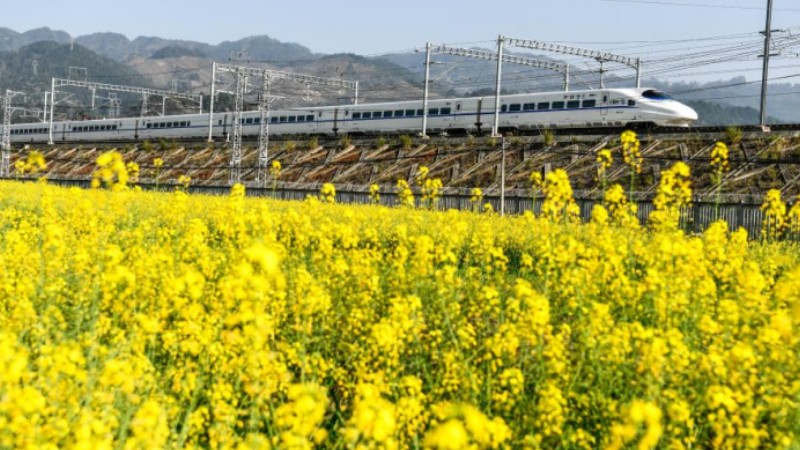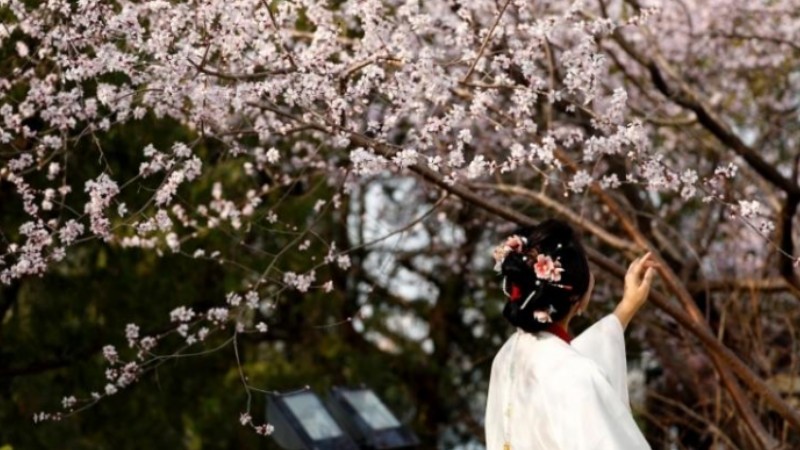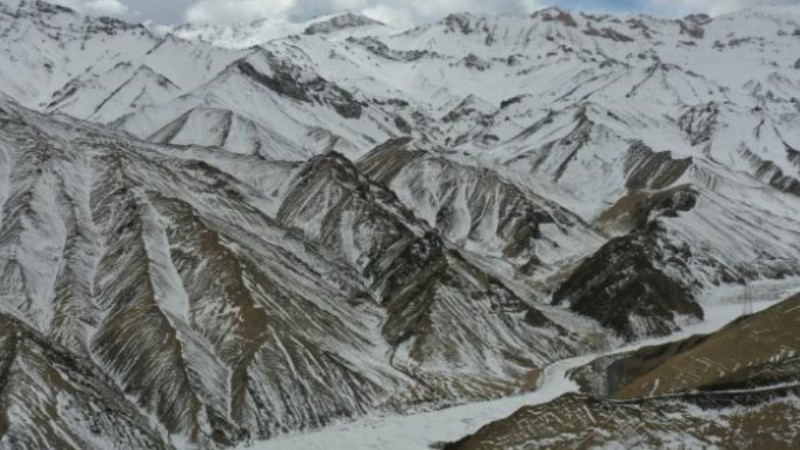China’s Dongying city sees ecological improvements in Yellow River Delta
Dongying city in east China’s Shandong Province has witnessed ecological improvements in the Yellow River Delta thanks to various measures to improve wetland restoration and protection.
The Yellow River flows into the Bohai Sea in the city, and the deposits of huge amounts of sand and mud from the river makes the Yellow River Delta, which generates extensive wetlands and is China’s most complete and youngest wetlands ecosystem in the warm temperate zone.

This aerial photo taken on Oct. 18, 2022 shows scenery at the Yellow River Delta National Nature Reserve in east China's Shandong Province. (Xinhua/Guo Xulei)
Many years ago, the wetlands there were threatened due to less water from the river, seawater intrusion, and other factors.
To protect the wetlands ecosystem of the river’s estuary, the Yellow River Delta National Nature Reserve was established in 1992.
In recent years, Dongying has adopted a comprehensive wetlands restoration model by giving high priority to protecting the nature reserve and letting nature restore itself. It has launched 17 wetlands restoration projects with a total investment of 1.36 billion yuan ($190 million) for the nature reserve. These projects connected 241 kilometers of water channels.
The city has also continued intensifying eco-compensation efforts by diverting water from the Yellow River to the nature reserve. Over the past three years, it has transferred 469 million cubic meters of water to the nature reserve, which has alleviated the salinization of soil and recovered the ecological functions of the wetlands there.
Last year, the nature reserve built six additional water gates, ensuring that it can divert water from the river throughout the year, according to Wang Lidong, deputy head of a special working group for wetland restoration projects at the nature reserve.
Smooth cordgrass has severely encroached on the growing space of Suaeda salsa that has adapted to alkaline soil at the nature reserve since 2010, said Wang Jinhe, head of Dongying Marine Economic Development Research Institute.

This photo taken on Oct. 18, 2022 shows white-naped cranes at the Yellow River Delta National Nature Reserve in east China's Shandong Province. (Xinhua/Yang Bin)
“The smooth cordgrass also threatens other local plants and hinders the stability of the wetlands ecosystem at the nature reserve,” Wang added.
Since 2016, Dongying, in collaboration with scientific institutions such as the Yantai Institute of Coastal Zone Research under the Chinese Academy of Sciences, has used geographic information systems and remote sensing technology, and launched field investigations to learn the distribution and intrusion mechanism of the smooth cordgrass in the Yellow River Delta.
The city has developed multiple treatment technologies and carried out management projects that have effectively contained the expansion of the plant and restored the biotic population in the intertidal zone.
The nature reserve has restored 72,500 mu (4,833 hectares) of wetlands and flat from farmlands, recovered 52,000 mu of Suaeda salsa and seagrass beds, and added 188 square kilometers of new wetlands, an increase of 12.3 percent.
Last year, Dongying built a real-time monitoring network for bird species at the nature reserve by using the internet, big data, remote sensing, radar and other information technologies in the nature reserve.
“We built a 24-hour monitoring system in key positions, including entrances and exits of roads and the distribution areas of birds. The system can identify the variety of bird species and count the number of birds, helping us ensure that birds are free from disturbance of human activity,” said Zhao Yajie, senior engineer of the Yellow River Delta National Nature Reserve’s management committee.
The nature reserve has put the habitats of Saunders's gulls, oriental white storks, cranes and other species under key protection.
As a result, the nature reserve has seen a prominent increase in the variety and number of bird species in recent years. It is now home to 371 bird species, up from 187 when it was just established. It has become an important stop, wintering ground and breeding place for birds migrating along East Asian-Australasian and the West Pacific flyways. It is also an important breeding place for oriental white storks, the world’s second-largest breeding place for Saunders's gulls, and the world’s second-largest wintering ground for white cranes.
“Dongying is currently working to build the Yellow River Estuary National Park, which will span 3,523 square kilometers, including 1,371 square kilometers of land area and 2,152 square kilometers of sea area, to explore pathways for the protection of river and delta ecology,” said Yu Hongbo, head of the publicity department of the Communist Party of China Dongying municipal committee.
Photos
Related Stories
- Nation ready to further promote green transition
- Gansu fight desertification with straw barriers
- Xinjiang's Aksu builds "green miracle" on Gobi Desert
- Town in China’s Hainan finds prosperity through protecting ecology, developing industries
- China’s Hainan continuously shatters record of rare species thanks to enhanced wetland ecology
- Golden mountains in the bamboo forest
- China's "water tower" invests 320 mln yuan in ecological protection in 2022
- Chinese researchers make progress in standardizing soil respiration measurements
- “Guardians” of Poyang Lake watch over wild animals amid extreme drought
- China's promotion of harmonious co-existence between man and nature wins worldwide acclaim
Copyright © 2023 People's Daily Online. All Rights Reserved.









